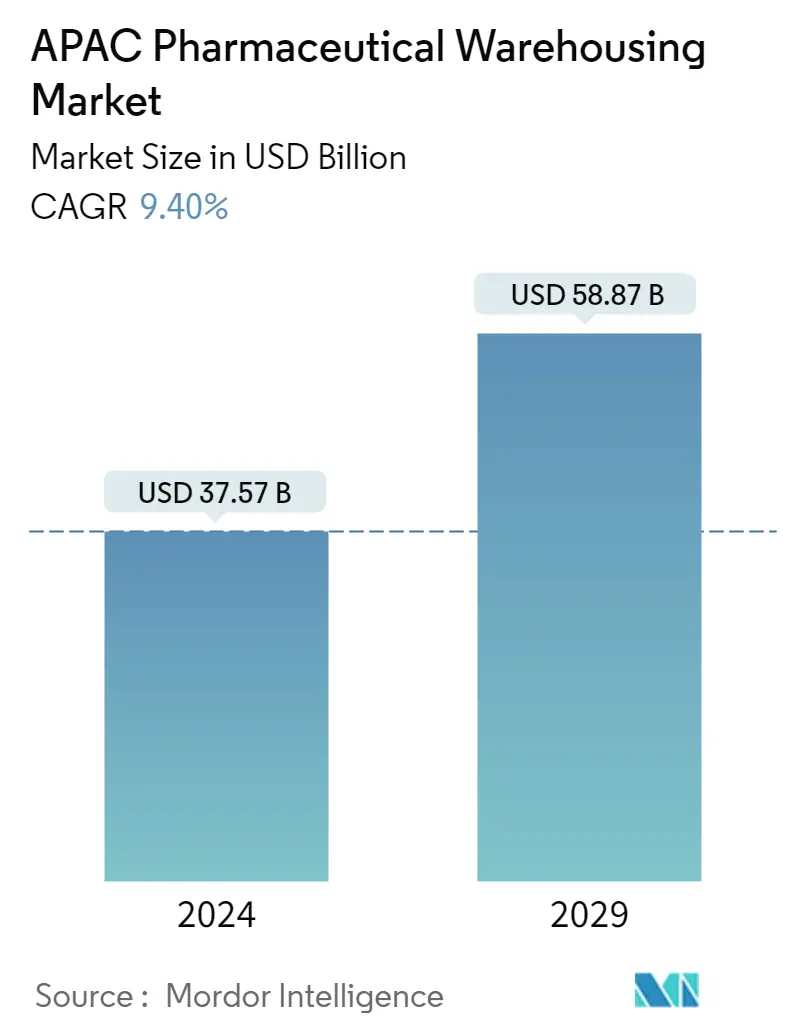Market Size of APAC Pharmaceutical Warehousing Industry

| Study Period | 2019 - 2029 |
| Base Year For Estimation | 2023 |
| Market Size (2024) | USD 37.57 Billion |
| Market Size (2029) | USD 58.87 Billion |
| CAGR (2024 - 2029) | 9.40 % |
| Market Concentration | Low |
Major Players_-_Copy.webp)
*Disclaimer: Major Players sorted in no particular order |
Need a report that reflects how COVID-19 has impacted this market and its growth?
APAC Pharmaceutical Warehousing Market Analysis
The APAC Pharmaceutical Warehousing Market size is estimated at USD 37.57 billion in 2024, and is expected to reach USD 58.87 billion by 2029, growing at a CAGR of 9.40% during the forecast period (2024-2029).
- The market is seeing the emergence of new technologies such as the Internet of Things (IoT), blockchain, and data analytics to improve visibility, traceability, and overall supply chain performance.
- The pharmaceutical industry has moved into a new phase of rapid integration. As a result of the overall progress of epidemic prevention and control and progressive liberalization, overall pharmaceutical supply chain development has started to recover.
- As we look ahead to 2023, the 100-year transformation and the 100-year pandemic are inextricably linked. Domestic development faces the triple challenge of declining demand, supply shocks, and weakening expectations.
- In China, Total sales of all three major end-of-life drugs increased slightly in 2022, by approximately 1.1%. Public hospitals continue to dominate the market, although their overall market share is decreasing due to the effects of national medical reform policies.
- In China, Public hospitals account for approximately 61.8 percent of drug sales in 2022, while retail pharmacies account for approximately 29.0 percent, and medical and drug sales account for approximately 9.2 percent. Drug consumption started to shift away from the hospital and toward the outside market, with a clear trend of prescription outflow.
- The increase in demand is driven by the increasing cost of healthcare in the region, the increasing prevalence of generic substitutes, and the prevalence of chronic diseases like diabetes, cancer, and cardiovascular diseases like hypertension, all of which result in high treatment costs.
- Cold chain expansion was expected to see a surge in demand as cold chain manufacturers shifted their focus from production to storage to extend the shelf life of their products due to COVID-19's impact on the global healthcare cold chain supply chain, as well as the pandemic’s restrictions on commerce.
